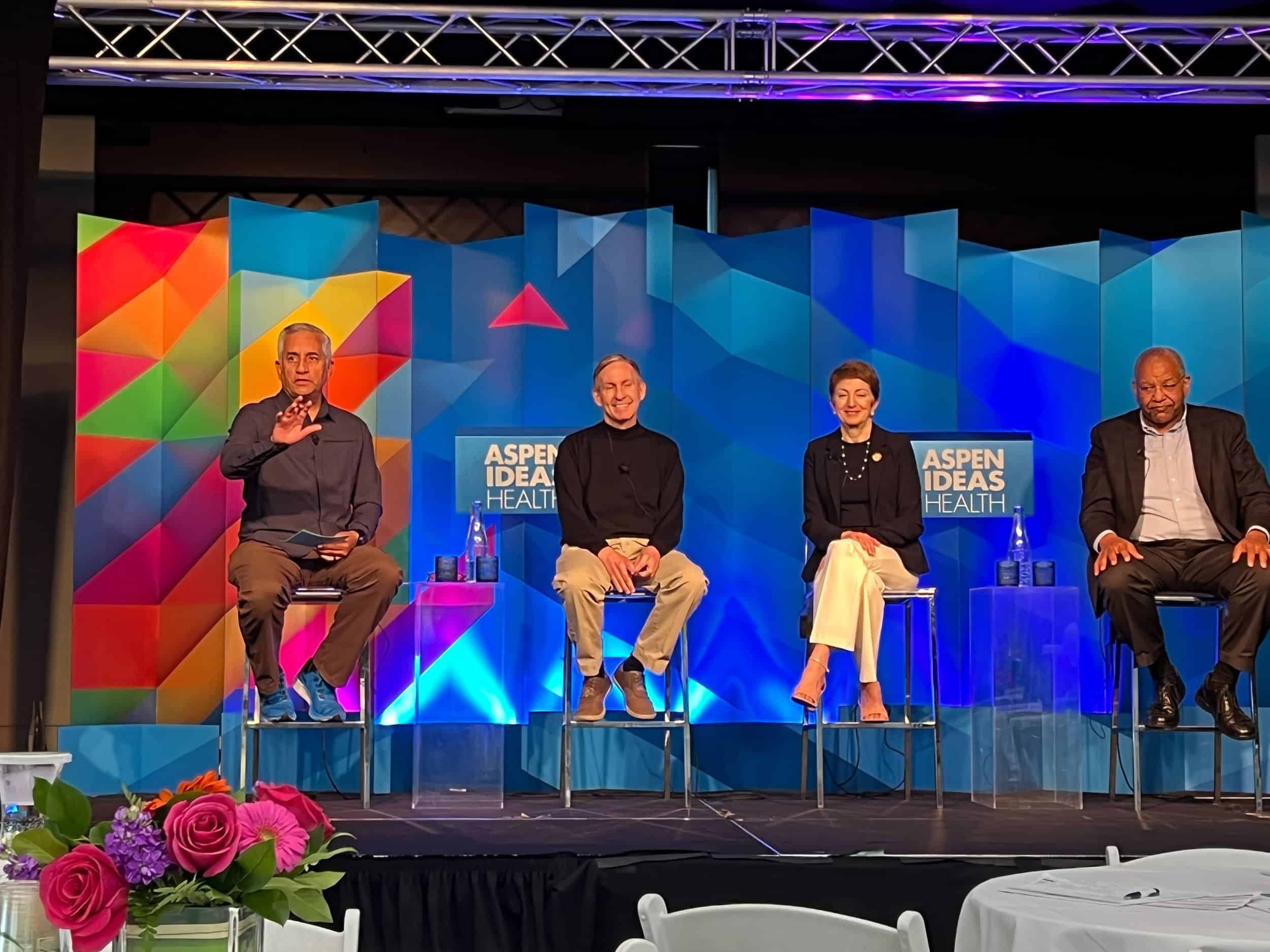At Aspen Ideas: Health, innovators, policy makers, physicians, researchers, investors and thought leaders came together from across the globe with one objective in mind: exploring bold approaches for the future of health. We spent three days discussing how to deliver care differently, better, and more comprehensively. So what needs to happen to bring these discussions to life, and actually impact the delivery of care?
Here are three ideas that are critical to improving health outcomes that aren’t widely talked about yet:
-
Blend social care with health care
-
Design a bridge layer of care
-
Demand and provide support for the Dr. Consumer
The Social Context: Blend Social Care with Health Care
Without a social plan, many health interventions will fail. As innovators, we need to ask ourselves, who else needs to be a part of the care relationship? It is way more than the doctor and the traditional care team. Dr. Megan Ranney from Brown University, said “digital health belongs outside of the care system, it belongs in the community.”
We agree.
From prescribing food as medicine (enabled by the world’s first digital food pharmacy Season Health) to supporting and celebrating community partners like Oasis Fresh Market who exist to be way more than a grocery store, to embracing community care over individual plans, we can change health outcomes.
As we design for the future of health, we need to ask: how might we understand the social determinants of health that will not only change lives now, but lay the foundation for continual progress in the fluctuating communities of tomorrow?
The Bridge Layer of Care: Close the Gap between Traditional and Relevant Care Delivery
As care delivery moves beyond the traditional four walls of the health system, a bridge layer must be designed to improve outcomes.
When speaking about the future of the hospital, Dr. Omar Lateef, president and CEO of RUSH Medical Center, said, “We need to design a layer of care that delivers health services at home.” While this is not only true as we think about hospital innovation, this also applies to the way we treat chronic and critical illness and even as we design for aging in place.
MD Anderson’s Dr. Peter Pisters alluded to this bridge as designing a hub and spoke system for oncology care. Even Best Buy’s Health division is thinking about it too. Deborah DiSanzo, Best Buy Health’s President, mentioned of the 9 million calls over 65 year olds made to their tech care line, over 90% of them were related to loneliness. LINUS’ recent study on Home is the Center of Health, uncovered the need for a bridge layer as well. We surveyed 1000+ adults between the ages of 60-70 to better understand the needs and desires of aging at home. We learned that while this population wants to stay at home as they grow older, 67% have not made any purchase to change their home environment to better support them as they age, Despite acknowledging that tech will play a significant role in their ability to even do so.
To close gaps between traditional and relevant care delivery, we need to prioritize building bridges that will enable consumers to easily access care.
The Dr. Consumer: Demanding and Providing Support
We’re all saying YES to empowering our patient, but do we really know what this means? Abbott’s Lisa Earnhardt said a program to supply continuous glucose monitors to people in underserved communities in Columbus, OH will help expand access to diabetes care. Even if we’re expanding access, are we prepared to deal with the Dr. Consumer? Are we asking consumers to do too much? In the Future of Digital Health panel, led by Rock Health.org’s Katie Dressler, the panelists discussed that 7 of 10 patients aren’t considered when designing digital health tools.
If we design with intent, and specifically with a guiding principle that digital health will make health easier, not harder, we will drive the consumerism of care. This is a future designed for a broader acceptance of the role health should play in those who choose to manage it as a Dr. Consumer, yet still fit their HCP into the picture as a vital advocate for their health.

